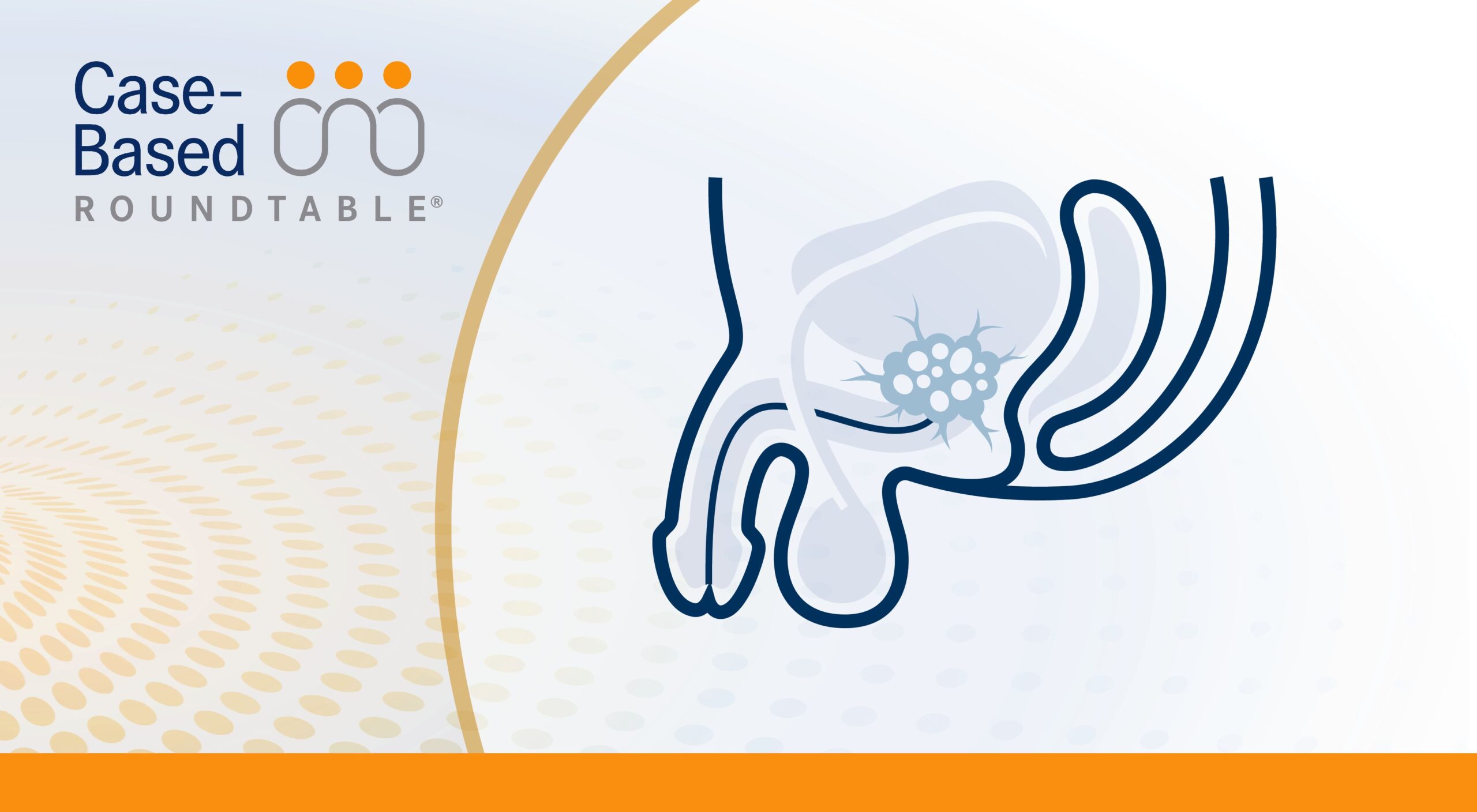Metastatic hormone-sensitive prostate cancer (mHSPC) has a growing number of effective treatment options that combine androgen deprivation therapy (ADT) with novel hormonal agents. During a live Community Case Forum in Frisco, Texas, Tian Zhang, MD, MHS, an associate professor and director of clinical research within the Division of Hematology and Oncology in the Department of Internal Medicine, and the associate director of clinical research in the Simmons Comprehensive Cancer Center at UT Southwestern Medical Center, moderated a discussion on these treatments. Zhang reviewed the regimens approved in mHSPC, including abiraterone (Zytiga), apalutamide (Erleada), and enzalutamide (Xtandi), while also noting the recent approval of darolutamide (Nubeqa).
CASE SUMMARY
Initial Presentation
- A 67-year-old man presented with urinary retention, fatigue and decreased appetite.
Patient history, lifestyle and clinical work-up
- History of hypertension and hyperlipidemia, both well controlled with medication
- No family history of prostate cancer
- Widow, worked full time as a commercial real estate broker, active, and very involved in grandchildren’s activities
- Transrectal ultrasound and biopsy revealed adenocarcinoma of the prostate gland, Gleason score 8 [4+4] with disease in 10/12 cores
- Prostate-specific antigen (PSA), 150 ng/mL; hemoglobin, 9.7 g/dL; absolute neutrophil count, 1.9
Initial Diagnosis and Treatment
- Patient was diagnosed with localized high-grade prostate cancer.
- He underwent robotic radical prostatectomy with subsequent PSA decrease (<0.1 ng/mL).
- CT and bone scans showed no residual disease.
Thirteen months after initial diagnosis – recurrence of disease
Presentation at recurrence
- Asymptomatic
- ECOG performance status: 0
- Routine follow-up:
- PSA, 35 ng/mL; hemoglobin, 10.3 g/dL; absolute neutrophil count, 1.6
- Imaging with CT and bone scan showed multiple enlarged retroperitoneal lymph nodes and 3 metastatic bone lesions (2 in pelvis, 1 in S1 vertebrae)
Diagnosis of recurrence
- Patient was diagnosed with metastatic prostate cancer.
- Germline and somatic genetic testing were negative.
- He is referred to a medical oncologist
- Therapeutic options (including bimodal and trimodal regimens) were reviewed with the patient as part of shared decision making
- He wished to pursue an aggressive treatment approach, but would prefer to receive oral treatment and minimizing adverse event is very important to him.
What does the NCCN suggest for a patient such as this with metastatic prostate cancer?
Tian Zhang, MD, MHS: The Category 1 preferred regimens are abiraterone, apalutamide, and enzalutamide for that low-volume metachronous metastatic disease. With the recent approval and with the ARANOTE data [NCT04736199], darolutamide will probably come up from a Category 2b indication, but it has not been quite updated yet.1
What was the timeline for mHSPC trials in terms of enrollment and approval?
LATITUDE [NCT01715285] was early on in 2013. Next, ENZAMET [NCT02446405] was a trial mostly in Australia and New Zealand. ARCHES [NCT02677896] was from 2016 to 2018. TITAN [NCT03978988] for apalutamide was also in that 2015 to 2017 timeframe. ARASENS [NCT02799602] was after the approval of abiraterone. ADT, darolutamide, and docetaxel came in the post-LATITUDE era. Then enzalutamide was approved, next apalutamide, and then the ARASENS regimen of that triplet in 2022. ARANOTE was a much more recent trial, mostly globally, of darolutamide and ADT and then most recently, gained its approval June 3, 2025. Hopefully it makes it onto your pathways soon. PEACE-1 [NCT01957436] was also looking at abiraterone, docetaxel, and ADT, and was reported out in 2024. If you do use a triplet, I think both darolutamide and abiraterone have good phase 3 data.
What was the topline efficacy for these trials in the mHSPC population?
Abiraterone doublets are usually well tolerated. There was a median radiographic progression-free survival [rPFS] around 33 months, overall survival [OS] improvement both for high-volume and low-volume disease in LATITUDE.2 ENZAMET and ARCHES had the doublet with enzalutamide compared with ADT and placebo. In those trials, we also see an improvement in both rPFS as well as OS. TITAN was ADT with apalutamide, and was placebo controlled. Finally, we’ll get into ARANOTE. The HRs were similar for PFS. With ARANOTE, the OS was a secondary end point. The HR crosses 1.0 for the OS. At the time of the initial presentation in 2024 for ARANOTE, not enough events had occurred in the OS end point to make a difference, but I would not take that to mean it was not statistically significant.3
DISCLOSURES: Zhang has previously reported having stock and leadership roles in Capio Biosciences, Archimmune Therapeutics, and Nanorobotics. They have served as a consultant or advisor for Exelixis, Pfizer, Bristol Myers Squibb, Seagen, Eisai, Aravive, Bayer, Lilly, Aveo, Merck, Sanofi/Aventis, Novartis, Gilead Sciences, EMD Serono, AstraZeneca, Loxo/Lilly, Xencor, and Johnson & Johnson/Janssen. They have also received honoraria from MJH Life Sciences, Aptitude Health, Curio Science, Peerview, Clinical Care Options, Mashup Media, and Dava Oncology. They have received travel, accommodation, or expenses from Bayer. They also have relationships with ASCO, Kidney Cancer Association KidneyCan, Myrovlytis Trust, and Winn Foundation.
References:
1. NCCN. Clinical Practice Guidelines in Oncology. Prostate cancer; version 2.2025. Accessed August 19, 2025. https://www.nccn.org/professionals/physician_gls/pdf/prostate.pdf
2. Kartolo A, Tannock IF, Vera Badillo FE. Management of metastatic hormone-sensitive prostate cancer: is docetaxel needed?. J Clin Oncol. 2022;40(31):3573-3575. doi:10.1200/JCO.22.00705
3. Saad F, Vjaters E, Shore N, et al. Darolutamide in combination with androgen-deprivation therapy in patients with metastatic hormone-sensitive prostate cancer from the phase III ARANOTE trial. J Clin Oncol. 2024;42(36):4271-4281. doi:10.1200/JCO-24-01798
